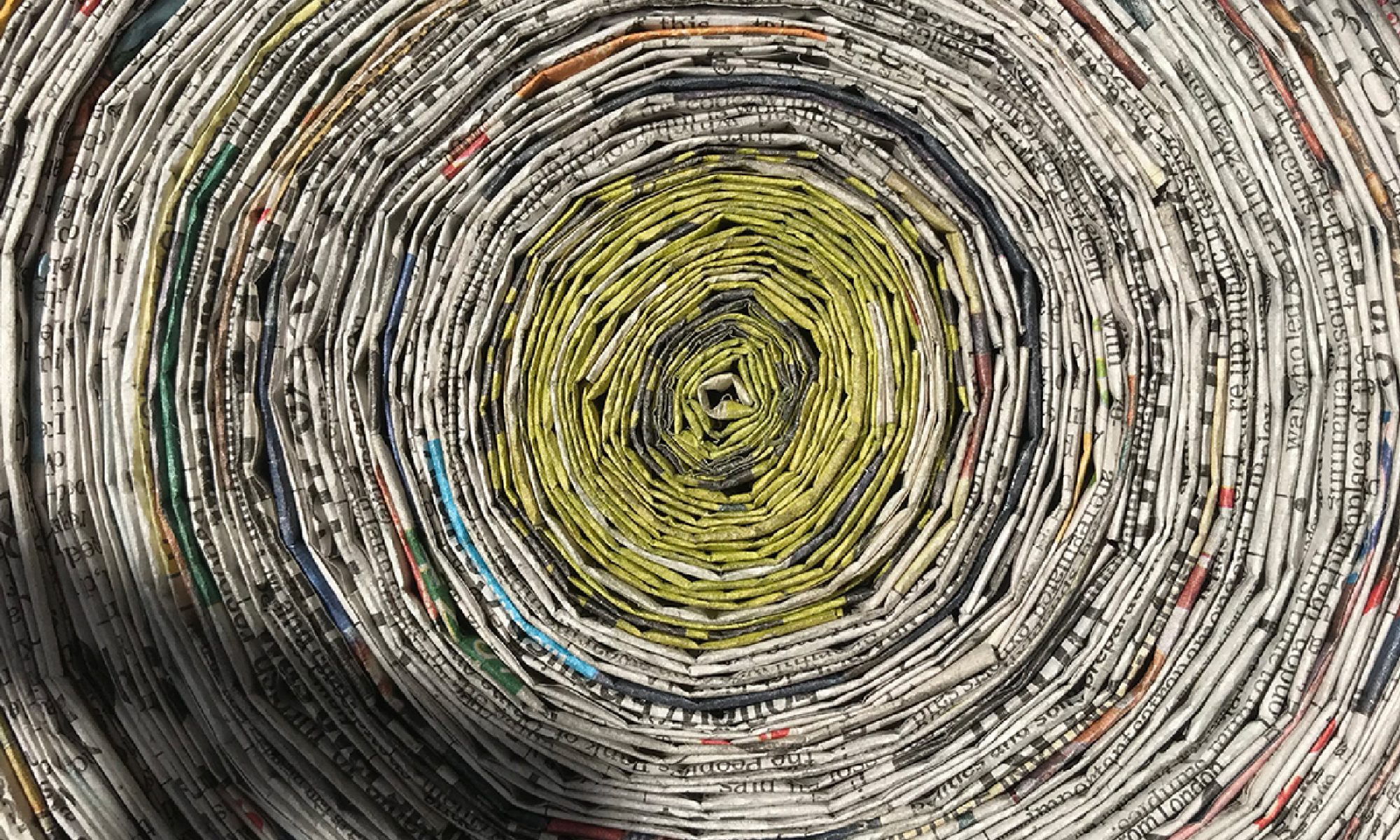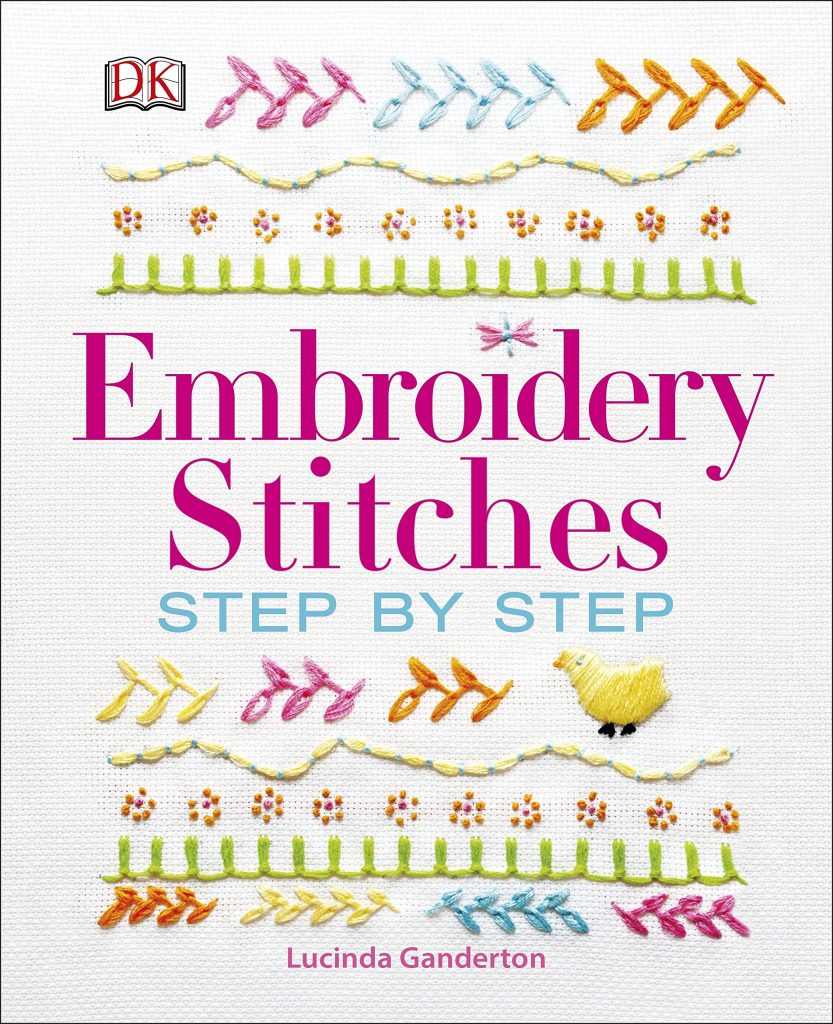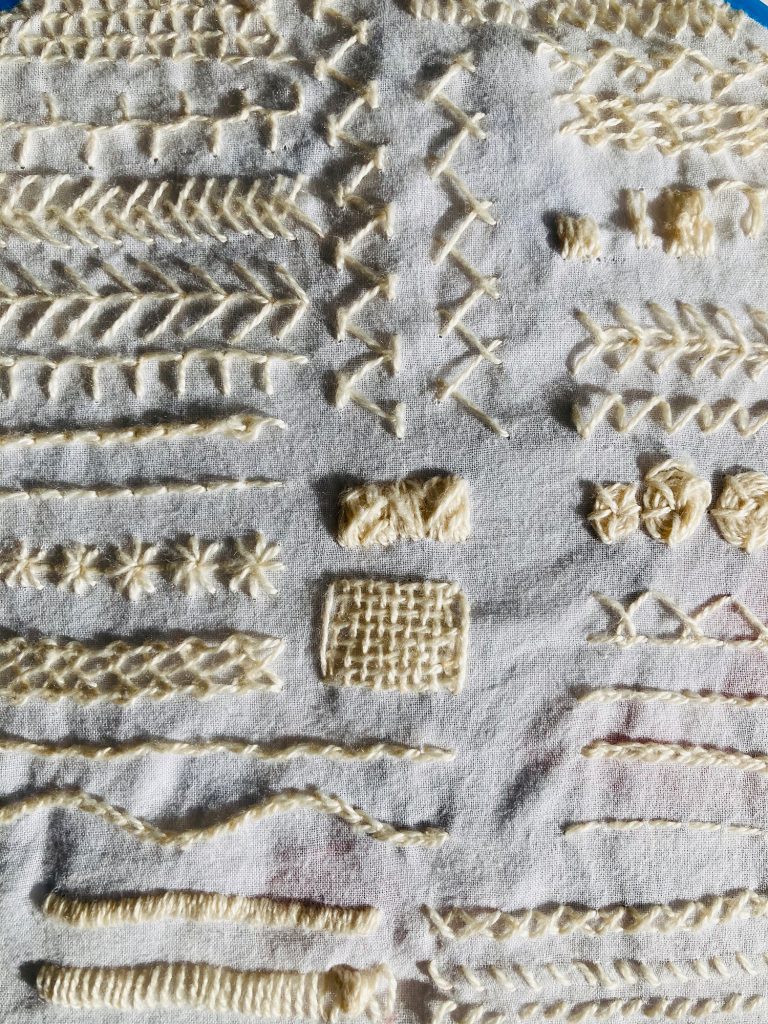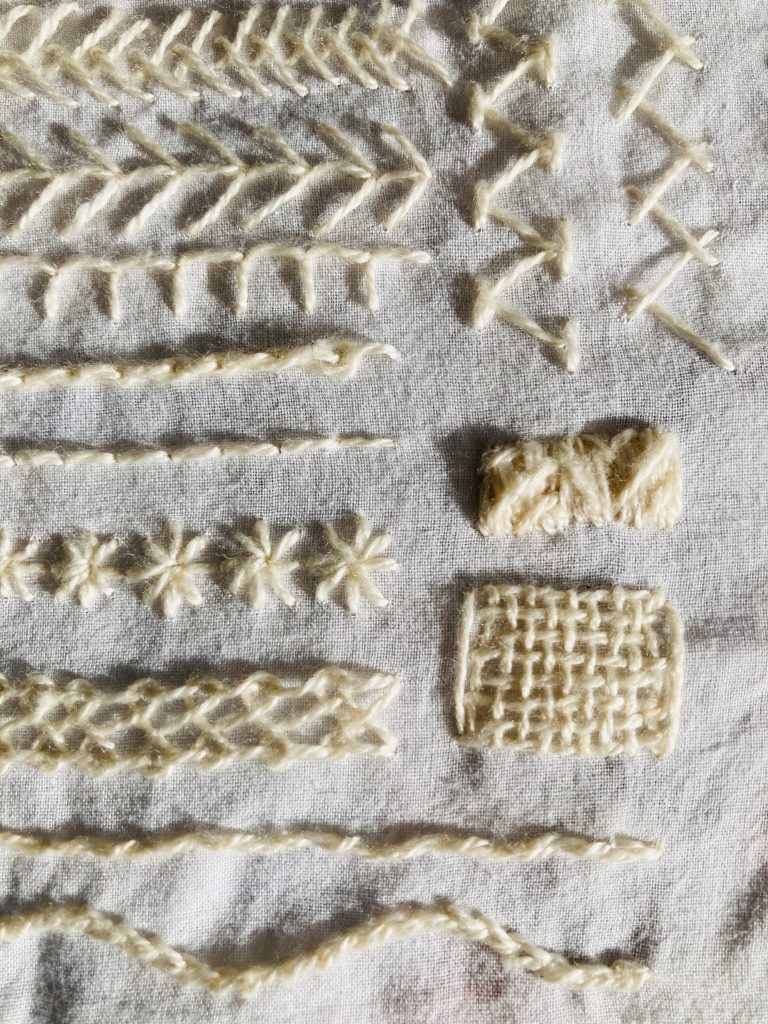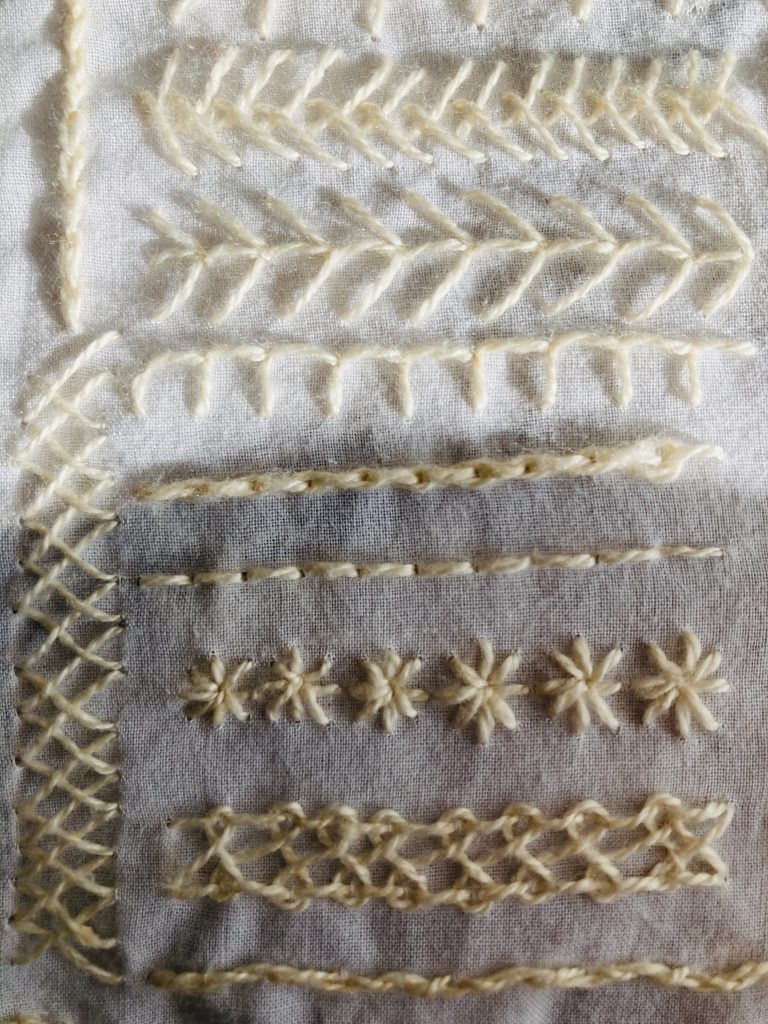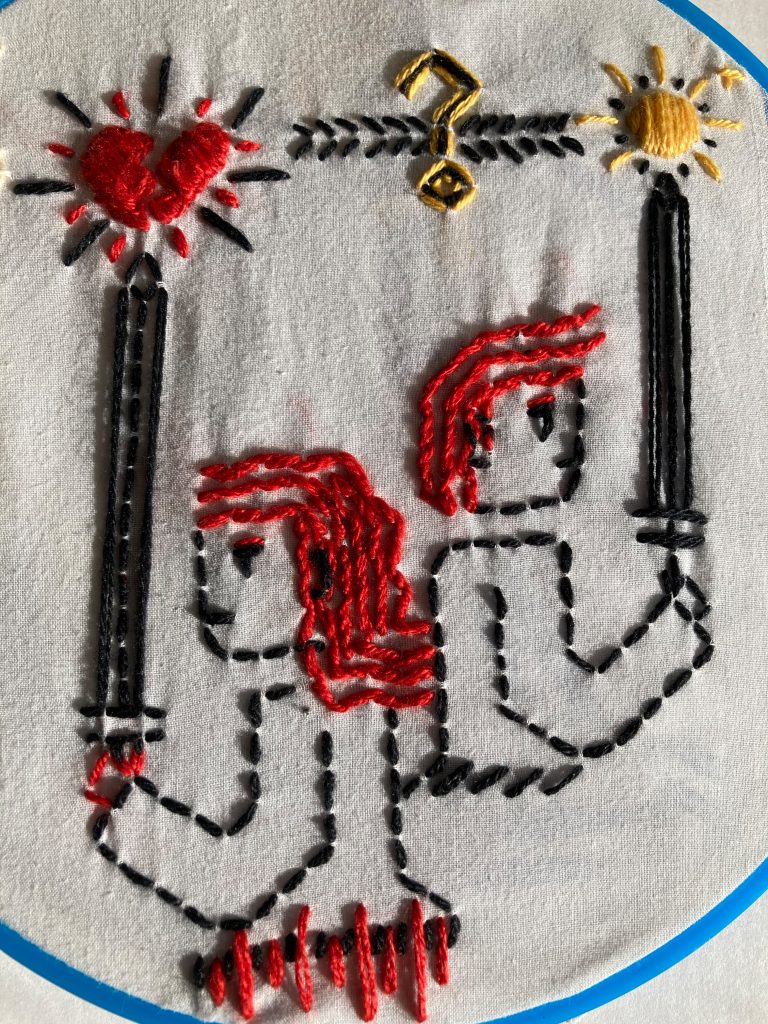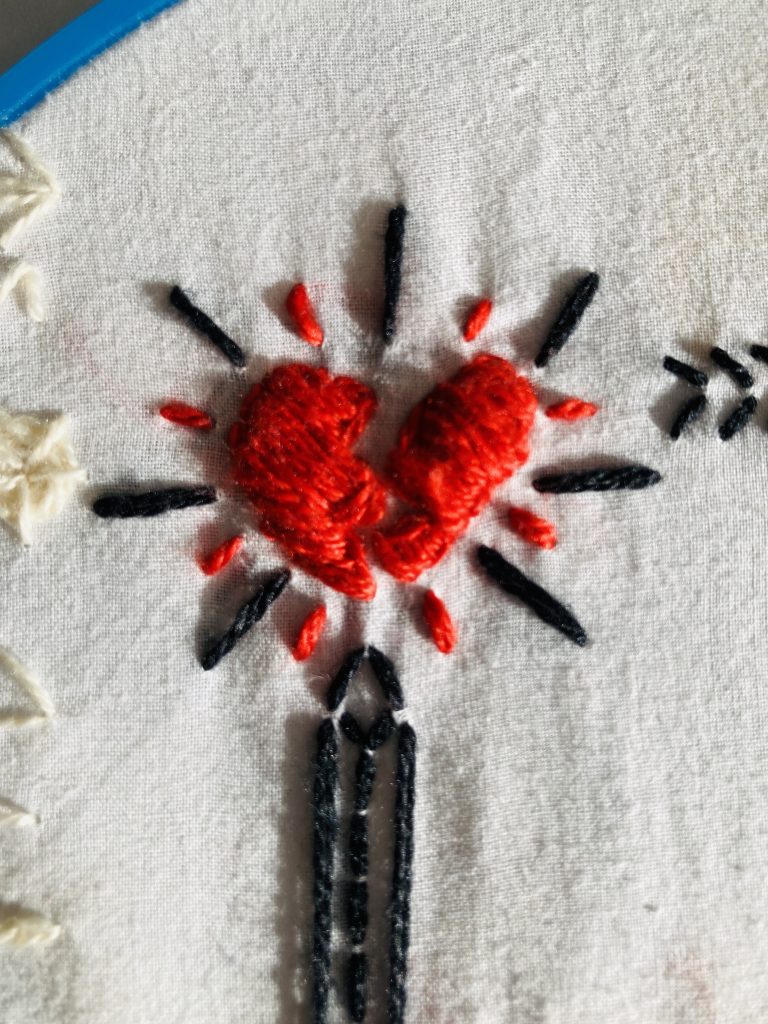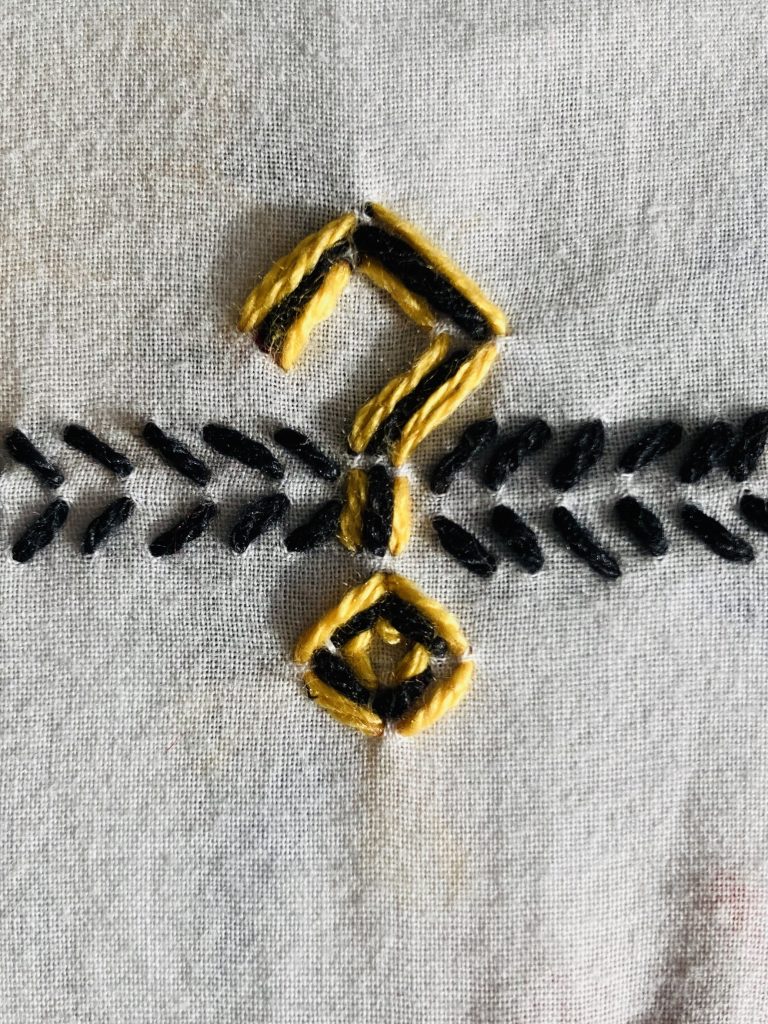“… EMBROIDERY IS ANONYMOUS WORK.”
This investigation deals with learning about embroidery and the stories told by embroidery through a practice of embroidery. This is new territory for me so how do I do this? I read two books. One, embroidery stitches: step by step, a book on embroidery techniques and two, threads of life, which tells the stories told by embroidery.
At first, I was learning the different embroidery techniques. I really liked the aesthetic of using white thread on white cloth. It’s simultaneously simple yet intricate? This really tested my patience which was great as one of my new years resolution is to be more patient. I had to redo some of the stitches because I stitched in the wrong direction or did the loop wrong or just totally messed up the technique. Whenever I was stitching, I’ve always remarked to my parents, how did people even figure out these techniques?
I liked some stitches more than others. I loved doing the stitches that look like fish bones (herringbone stitches) the most and didn’t really love anything involving loops. I didn’t even do a lot of stitching but it took up a lot of my time. This really made me appreciate the precise, intricate embroidery that I have seen on tapestry and clothing. I am not at that point where I can even fathom doing that level of work but I find so much beauty in it; not at just in the final outcome of work but also the making. The time. The precision. The patience. The artistry.
I continued learning different techniques and reading on embroidery; trying to navigate this new world.
I came to point where I decided that I won’t look at the embroidery technique book anymore and just freestyle stitch. I decided to put down my thoughts and feelings on embroidery through embroidery. I always felt like stitching felt a lot like stabbing with a little sword hence why people are hold swords in the work. When I was reading, there was a general perception that embroidery is historically and presently considered women’s work.
In a lot of cultures, women did embroidery to create textiles for their trousseau. In the West, historically, women learnt how to embroider as part of their household duties (not sure if that’s the right word). But how about embroidery as an industry? In America, the sewing industry is female dominated; around 75% of people in the industry are women ( Source: https://www.zippia.com/sewing-jobs/demographics/). In contrast, in India, sewing is a male dominated industry (https://ncert.nic.in/ncerts/l/kehc108.pdf).
When I asked my parents about gender and embroidery in India, they told me that the general perception is that embroidery is generally done by women. I don’t have any statistics for this though. This is speculation. That perception is such a contrast to the reality of the sewing industry in India. Hmmmmmmmmm.
My father was telling me he associates embroidery with his aunts and grandmother sewing at home; sometimes for mending and other times for creative expression. I suppose this perception on embroidery is the same perception people have with cooking. Cooking is generally an activity perceived as women’s work but if you look at it from an industry standpoint, it’s male dominated. So. It is only considered women’s work until money is involved. Hmmmmmm.
Another point that I found interesting during my reading is that embroidery is anonymous work. Who are the people doing this art? In the reading, the author was talking the women who stitched Bayeux tapestry. We don’t know their names. We can only speculate on how they live. Now my question is do I take advantage of the anonymity associated with embroidery or do I take away the anonymity associated with embroidery work?
When I looked at the final outcome, I noticed how the style change. The white on white work is delicate and more intricate but the freestyle is simple and bold and I was just like yeah, that’s just how think visually. How do I go forward with this? I feel like I’ve not even scratched the surface of where this could go. How does my own practice fall in line with embroidery? Mixing my communication design practice with my new embroidery practice? Where do I go from here? Let’s see.
